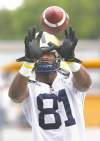It’s time to think about the future
Advertisement
Read this article for free:
or
Already have an account? Log in here »
To continue reading, please subscribe:
Monthly Digital Subscription
$1 per week for 24 weeks*
- Enjoy unlimited reading on winnipegfreepress.com
- Read the E-Edition, our digital replica newspaper
- Access News Break, our award-winning app
- Play interactive puzzles
*Billed as $4.00 plus GST every four weeks. After 24 weeks, price increases to the regular rate of $19.00 plus GST every four weeks. Offer available to new and qualified returning subscribers only. Cancel any time.
Monthly Digital Subscription
$4.75/week*
- Enjoy unlimited reading on winnipegfreepress.com
- Read the E-Edition, our digital replica newspaper
- Access News Break, our award-winning app
- Play interactive puzzles
*Billed as $19 plus GST every four weeks. Cancel any time.
To continue reading, please subscribe:
Add Winnipeg Free Press access to your Brandon Sun subscription for only
$1 for the first 4 weeks*
*$1 will be added to your next bill. After your 4 weeks access is complete your rate will increase by $0.00 a X percent off the regular rate.
Read unlimited articles for free today:
or
Already have an account? Log in here »
Hey there, time traveller!
This article was published 20/07/2012 (4825 days ago), so information in it may no longer be current.
Watching Alex Brink get dumped on his bonnet for the second time in less than a week — the first courtesy of JC Sherritt in Edmonton and the latest by a blitzing Brandon Isaac on Wednesday — made me wonder whether the emerging realities of head traumas have even made a dent in pro football culture.
If you had the opportunity to be the starting quarterback of a professional CFL team and launch your income into the $300,000-400,000 stratosphere for six-months work, would you report a concussion that would interfere with that opportunity, or just play through it?
Much has changed in concussion prevention and treatment since I began pro football in 1997. Helmets are better, protocols for diagnosing and treating concussions are new and improved and even attitudes from league magistrates and coaches are remarkably more acute and sympathetic.
Prevention
Yet, I dare to say, the variable that matters most when it comes to concussion treatment and prevention has changed the least over time, and that is the culture of professional football. Everything else may have changed, but if a change in attitude isn’t apparent — which can only come from education — it is all for naught.
The first understanding I had of this decision making, of risk versus reward, began when I didn’t have anything to do with football at all.
I remember a study presented to me in high school that asked athletes whether they would risk potentially harmful long-term side effects, if taking a particular drug would guarantee them an Olympic gold medal. The results were overwhelmingly in favour of accepting a long-term risk for an immediate reward, which is almost always the case in pro sports.
Many things you do on the field, many of the physical sacrifices you make as a player, catch up with you later on in life. If you’ve had surgeries and reconstructions and torn and ruptured ligaments, these will undoubtedly limit your mobility later on, especially as compared to someone who never subjected their body to the physical rigours of the game.
But these are all conditions and possibilities that players sign up for. What we are just beginning to learn now, however, is something most of us had no knowledge of when we started playing: the long-term effects of concussions later on in life.
What I saw last week, in the game against Edmonton, makes me wonder. While things have changed for the better, when ambition squares off with down-the-road consequences, the allure of that shiny gold medal, or equivalent thereof, will win out every time.
Vicious
The hit I saw last week was something to behold. This is not a debate about whether it was legal or not, but there is absolute consensus about how vicious it was. When Sherritt intersected with Brink on a tangent line, the force of that collision bounced Alex’s head off the turf like it was made of rubber.
I have not talked to Alex about the hit, I have not talked to the head trainer on the Bombers staff about the hit, nor have I spoken to any doctor.
Yet when I watched that hit on TV, I thought of my own experiences in contacts of lesser degrees that made me black out, at least momentarily. Then I thought of all the instances I’ve seen where a player was knocked completely out and lay prone on the turf exactly like Alex did, or arose like Pat Woodcock once did after a hit by Terry Ray, and immediately vomited.
As much as I hope I’m wrong, my experience, both personally and visually, tells me Alex was either knocked out or concussed by that hit, or both, but wanted his opportunity more than he wanted to think about the potential ramifications 30 years from now.
If what I suspect had actually happened, and he disclosed it, then he wouldn’t have started for the Bombers on Wednesday. Joey Elliott would have. And just like a severe concussion, that decision and a culture of short-term perspectives, can change a life one way or another, for better or worse.
Doug Brown, once a hard-hitting defensive lineman and frequently a hard-hitting columnist, appears Tuesdays and game days in the Free Press.
Twitter: @DougBrown97









